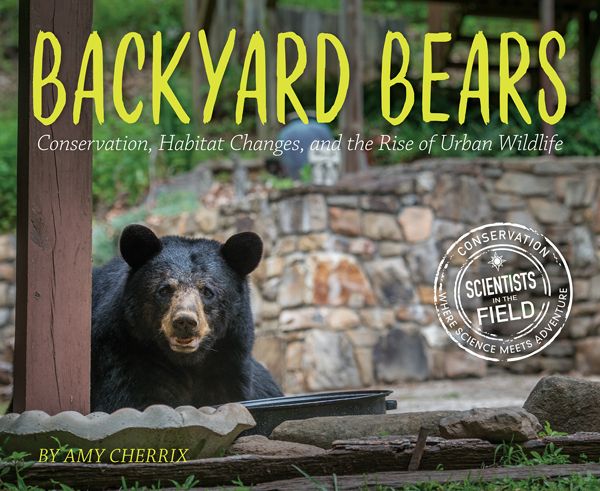
Backyard Bears: Conservation, Habitat Changes, and the Rise of Urban Wildlife
By Amy Cherrix
Edition
Kirkus Best Books, Middle-Grade - 2018
By Amy Cherrix
Hardcover edition
Publisher Houghton Mifflin Harcourt Imprint Houghton Mifflin Harcourt ISBN9781328858689
Awards and Honors CCBC Choices 2019 Choice: Science, Technology, and the Natural WorldKirkus Best Books, Middle-Grade - 2018
Backyard Bears: Conservation, Habitat Changes, and the Rise of Urban Wildlife
 6
6
Out of stock
SKU
9781328858689J
North Carolin'’s black bears were once a threatened species, but conservation efforts have been so successful that there is a boom in bear population. Now scientists ask: can humans and bears live compatibly in and around Asheville?
Web resources. Glossary. Source notes. Selected bibliography. Author’s note. Index. Full-color photographs.
Web resources. Glossary. Source notes. Selected bibliography. Author’s note. Index. Full-color photographs.
|
Standard MARC Records Cover Art |
Nonfiction Middle Grades 5-8)
Nonfiction Middle
Nonfiction Middle Grades 5-8)
For Grades 5-8
Knowledge is power, and this category embodies that principle. Featuring 12 carefully selected nonfiction books, the collection spans autobiographies, anthropological studies, and more—making it perfect for research, classroom enrichment, and independent exploration. Some selections may explore identity, relationships, and real-world challenges, including LGBTQIA+ themes, moderate language, social issues, and other sensitive topics.
12 books per Year
$256.56 per Year
Interests
Biographies, History, Nonfiction, Science/STEAM






